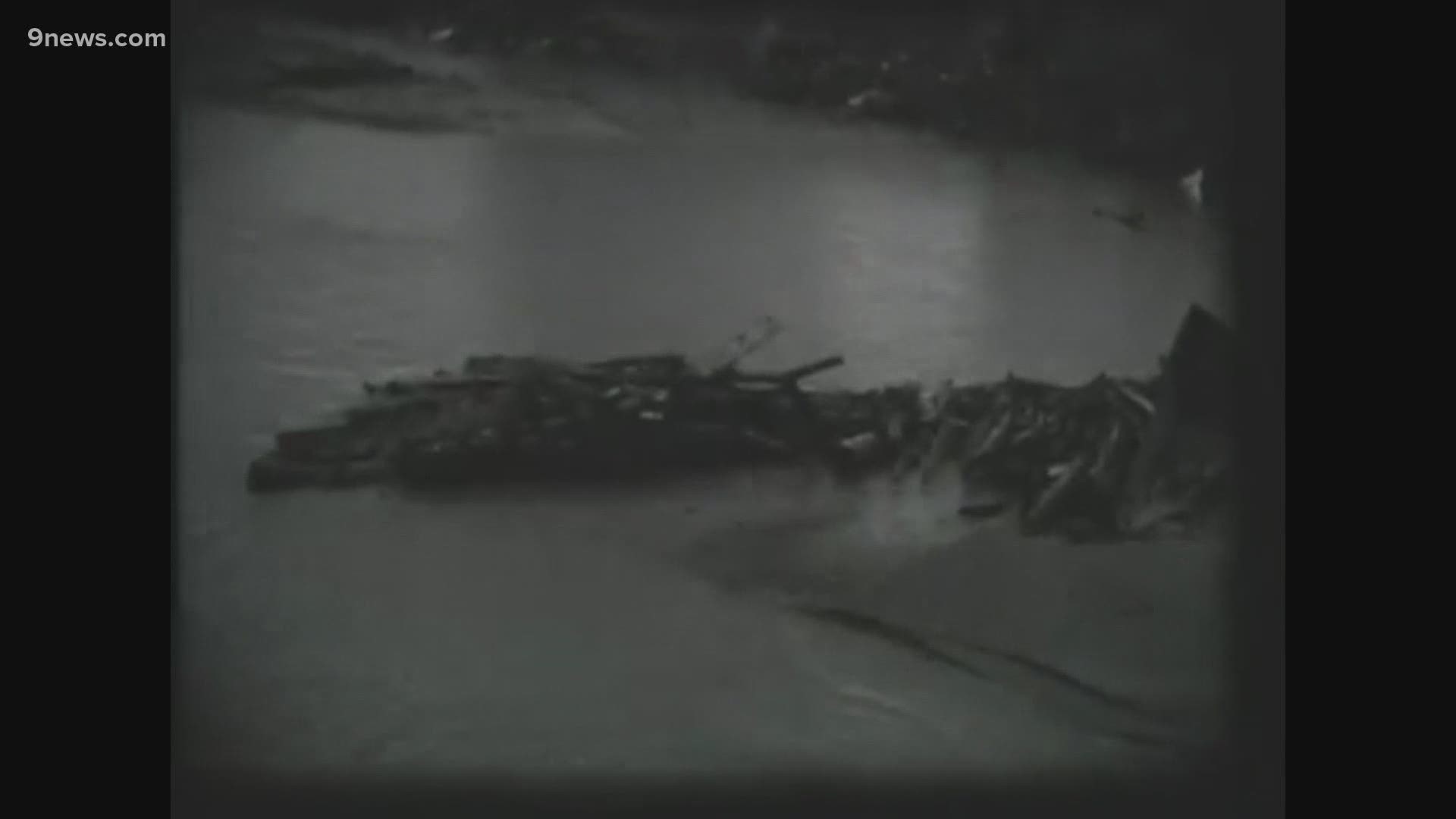LITTLETON, Colo. — As people head out on the waters of Chatfield Reservoir, many probably don't realize the lake is there now because of what happened 55 years ago on June 16.
"It was a 20-foot wall of water when it hit Littleton," Jenny Hankinson said.
She is Curator of Collections at the Littleton Museum and helped put together an exhibit about the 1965 South Platte River Flood.
"The clouds just sat in that area and dumped rain," Hankinson said.
On June 14, 1965, Hankinson said about 14 inches of rain fell upstream near Castle Rock and Deckers adding too much precipitation to Plum Creek and the South Platte River forcing water over the banks collecting debris along the way.
"With the force of water behind it, it becomes a more powerful force," Hankinson said. "So, it is crushing things in its path and moving things in its path."
Hankinson said 13 bridges were washed out along with 2,500 homes causing more than $500 million in damage at the time across Colorado. In 2020 dollars, that is the equivalent of more than $4.1 billion.
"I feel like the most interesting thing that I've read about the flood is that people would hear it first and then smell it and then feel it and then they saw it," Hankinson said.
Despite the massive destruction that stretched from Sedalia to Nebraska, Hankinson credits law enforcement that only 21 people died.
"I think the police and the sheriff's department did a really good job of going building to building to get everybody out of the way," Hankinson said.
She said the aftermath and recovery were felt all across Colorado.
"It was a whole state event," Hankinson said. "Twenty-seven counties were declared disaster areas by President Johnson."
Due to the flood, Hankinson said development along the river is now smarter with fewer buildings, more parks and open land that can absorb the water. But, the biggest protection is the dam at Chatfield Reservoir built eight years after the flood.
"There's more space around the dam if you go look at it and you see how far up water would have to go to overflow," Hankinson said.
So, as people have fun at Chatfield, Hankinson wants them to know the real reason why the water is there -- 55 years later.
"By learning about the history of previous disasters in the state, you can glean some information about how people got through it," Hankinson said.
SUGGESTED VIDEOS: Colorado’s History

